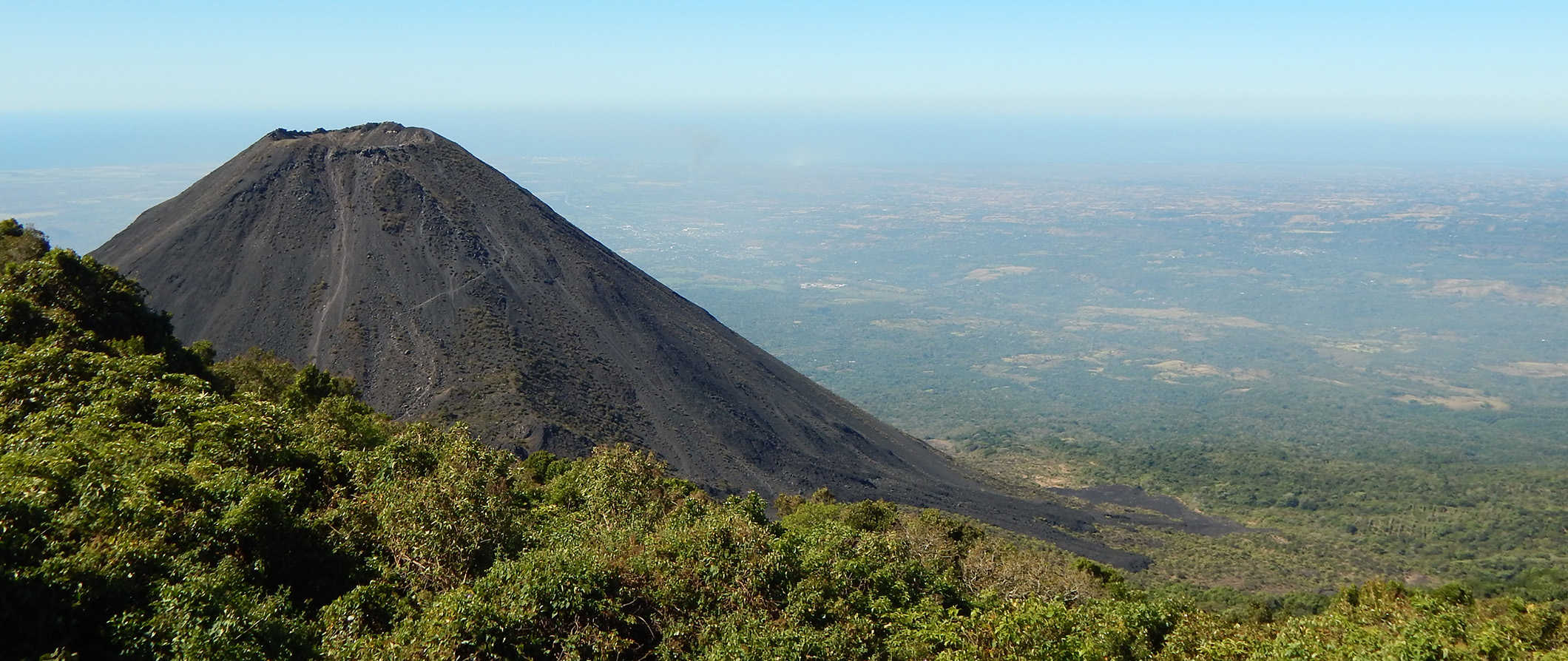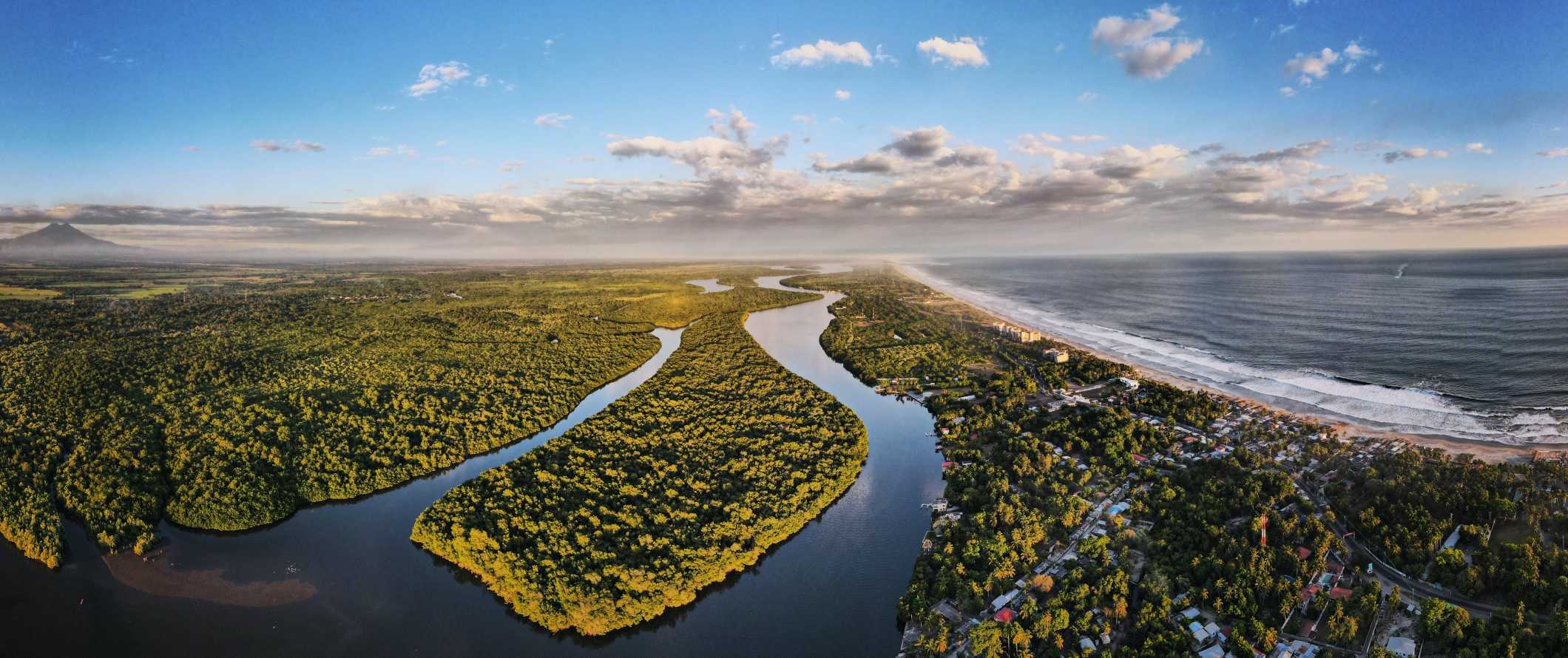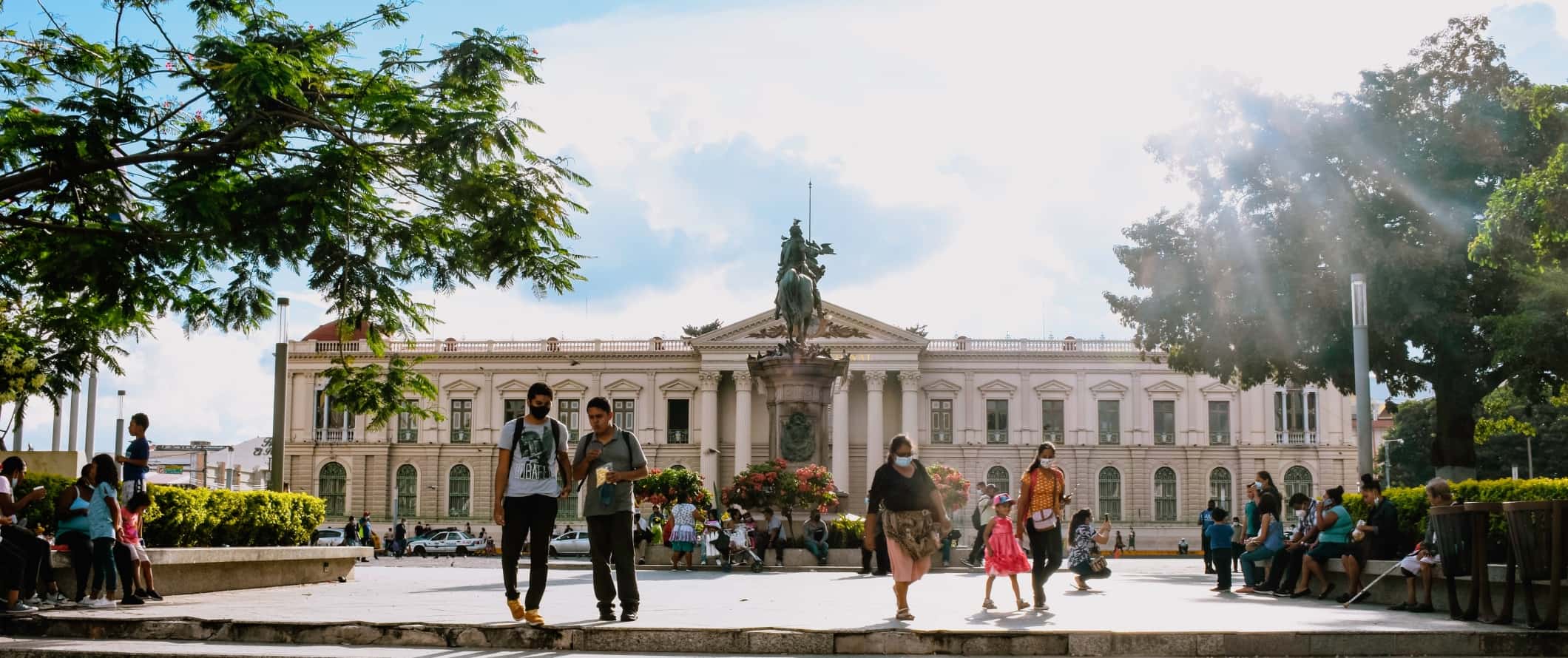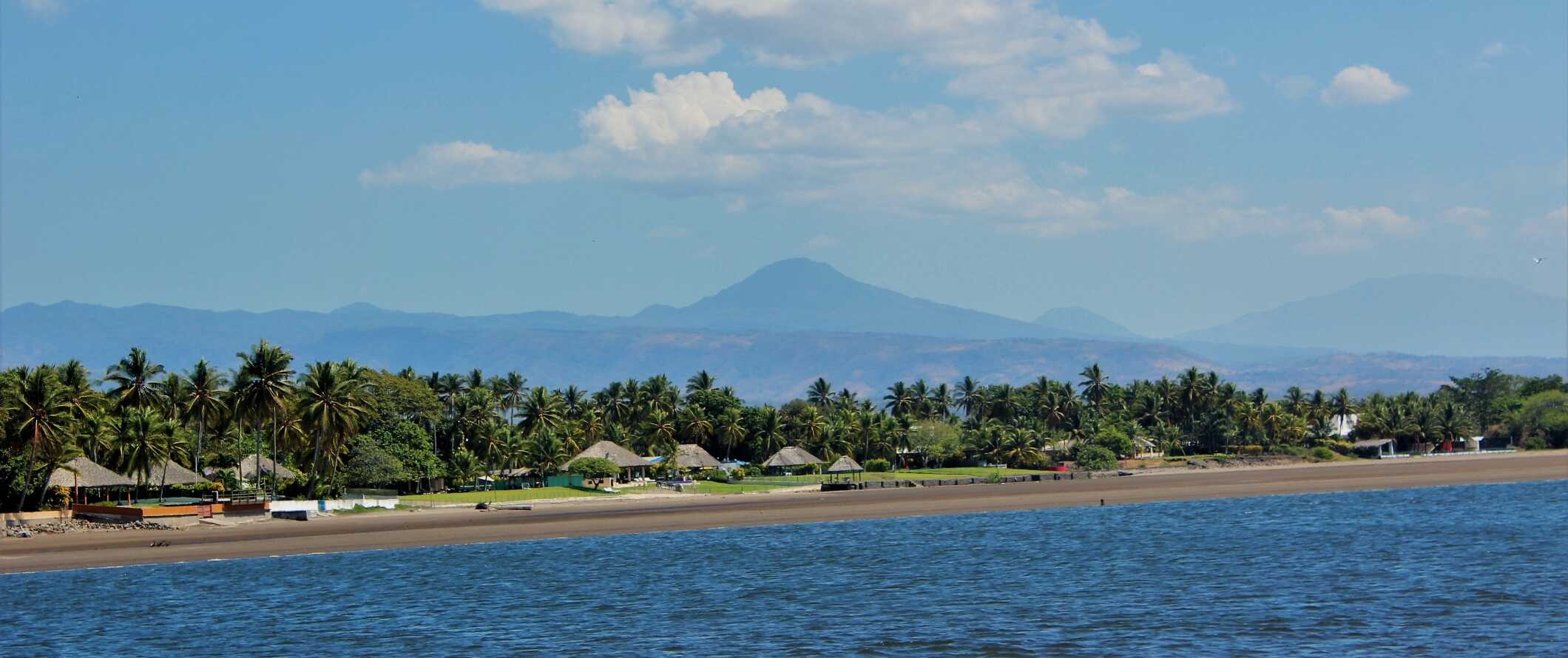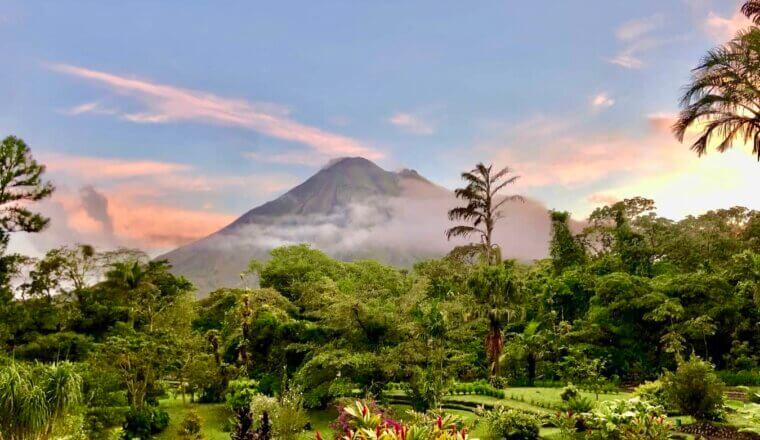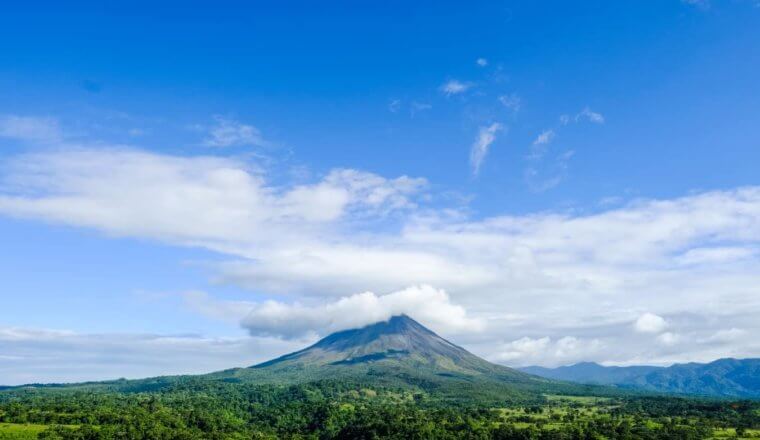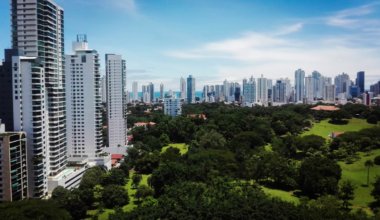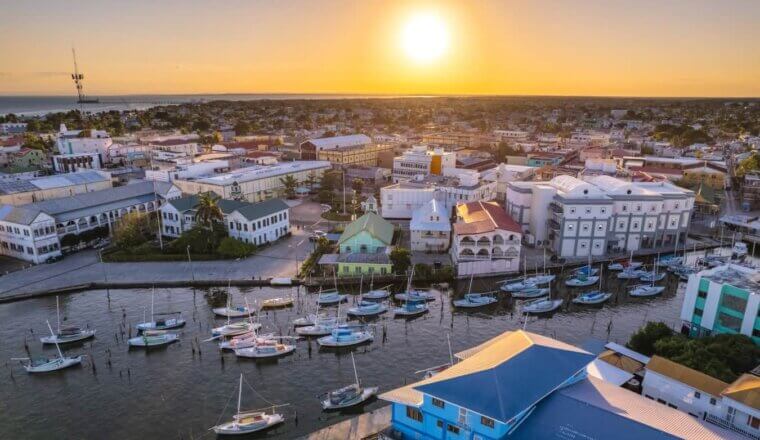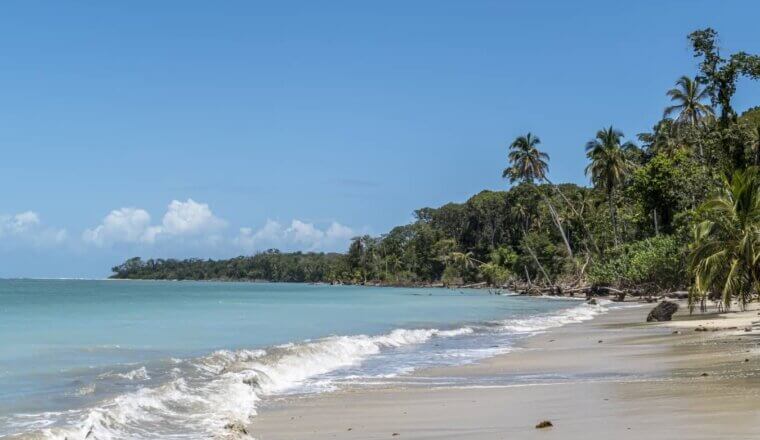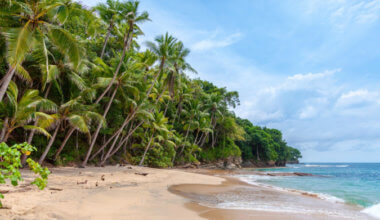El Salvador is the smallest and most densely populated country in Central America. Somewhat bypassed on the tourist trail (it’s tucked away from the main route people take through Central America), this country is filled with natural beauty, forests, beaches, and even the opportunity to view some archaeological sites.
While the country has had a turbulent past (it was ruled by a dictator from 1931-1979 and then experienced a civil war from 1980-1992), El Salvador has slowly been coming into its own and is now a popular spot for intrepid backpackers looking to get off the beaten path.
El Salvador is the perfect place to experience the great outdoors without the crowds as you make your way around Central America. Everyone is super friendly and generally happy to have visitors and the crowds here are much smaller than you’ll find in neighboring Costa Rica and Panama.
The prices are lower too.
This travel guide to El Salvador can help you plan your trip, save money, stay safe, and make the more of your time in this underrated destination!
Table of Contents
Top 5 Things to See and Do in El Salvador
1. Visit the Montecristo Cloud Forest
This cloud forest is home to diverse flora and fauna, including ferns, orchids, mosses, spider monkeys, and anteaters. The area is incredibly biodiverse and is believed to contain 7% of the world’s species. Within the cloud forest, you can explore Trifinio Fraternity Biosphere Reserve, established in 1987, which was the first protected area in El Salvador. Hike to the highest point, El Trifinio, with an altitude of 2,400 meters (7,874 feet), where the borders of El Salvador, Honduras, and Guatemala converge. One of the most popular attractions in the cloud forest is the Garden of the Hundred Years which contains over 100 different types of orchids. There’s a limit to how many people can visit the park each day, so it’s best to arrive early.
2. Hang out in El Tunco
One hour outside of San Salvador is this backpacker’s paradise. The tiny town is packed with hostels and is a popular place for relaxing beach vacations and lively party weekends. The name of the town translates to ‘the pig’ and it’s named after the landmark just offshore — a huge rock that resembles a pig. Cheap hostels, cheap drinks, a great party scene, and world-class surfing await in this beachside town. Besides the nightlife, El Tunco is known for its beautiful black sand beaches and gorgeous sunsets.
3. Go to Puerta del Diablo
Also known as the Devil’s Door, this rock formation serves as a lookout, offering sprawling views over San Salvador, the Pacific Ocean, and the surrounding mountains. Nowadays, it’s a beautiful place to visit and a popular tourist attraction, but its history is shrouded in darkness. During the civil war, it was a site where prisoners were held and tortured. Once a single rock, the formation has now separated into three boulders. The climb to the overlook is steep, with an ascent of 1,250 meters (4,101 feet). Take the bus from San Salvador and then it’s a quick walk to the boulders.
4. See the Cihuatán Ruins
Cihuatan was founded after the collapse of the Mayans around 900 CE and quickly became a regional capital. It lasted for 100 years before unknown invaders burned the city in the 10th century. It’s located near the modern-day town of Aguilares, about 30 kilometers (19 miles) outside of San Salvador. The Pre-Columbian archeological site covers over 180 acres and includes pyramids, Mesoamerican ball courts, and religious sites which were first excavated in the 1970s. By the 1980s, over 900 structures had been uncovered. You can visit the ruins and the museum explaining the history of the area as a day trip from El Salvador. Admission is $3 USD.
5. Visit La Libertad
La Libertad is a popular beach town alternative to El Tunco, with Punta Roca offering huge waves for surfing. The port city was established in 1770 and is a tropical paradise, with beautiful sandy beaches, palm trees, and opportunities to surf, sunbathe, and snorkel or scuba dive. Nearby you can explore Walter Thilo Deininger National Park which is rich in wildlife. If you want a real taste of the local life, visit the busy daily fish market on the waterfront. Otherwise, this place is all about relaxing, enjoying reggae music, and soaking up the sun.
Other Things to See and Do in El Salvador
1. Hike the volcanoes
El Salvador has its share of volcanoes to explore, and the best place to see several of them is Cerro Verde National Park. This park is home to Cerro Verde, Izalco, and Ilamatepec. The trails all allow you to get up close to the volcanoes, including a walk around the Cerro Verde crater, where you’ll find a cloud forest full of tropical birds and plant life. Ilamatepec is the highest point in the park, at 2,381 meters (7,811 feet) at the summit. There are lots of tours from San Salvador starting from about $85 USD, or you can show up and just pay the $3 USD entrance fee.
2. Visit Joya de Cerén
Joya de Cerén is a UNESCO World Heritage Site that tells a story about the everyday lives of the Mayans. Once a small Mayan farming settlement, the town was buried under volcanic ash in 595 BCE when the Laguna Caldera Volcano erupted. The site includes a Temazcal (sauna), and other important buildings like storehouses, a kitchen, and a religious building meant for communal events. There’s also an excellent preserved shaman’s home and a collection of agricultural tools. This site is the Mayan version of Pompeii. It’s $7 USD to visit.
3. Get cultural in San Salvador
Although most people don’t spend a lot of time in San Salvador, there are a few highlights to see. Most of the city’s activity centers around the Plaza el Salvador del Mundo, where you’ll see the iconic Savior of the World statue (with Jesus standing on a globe). Walk around downtown, try some pupusas (delicious El Salvadorian flatbread stuffed with cheese, pork, squash, or refried beans), and visit the domed Metropolitan Cathedral which is filled with colorful stained glass. At the National Palace, peruse the old government rooms and the courtyards, and if you want to do some souvenir shopping, head to the National Handicrafts market for some local artwork. (Note: Sometimes downtown San Salvador experiences gang violence. Read our safety section to learn how to keep yourself safe.)
4. Go diving
El Salvador has some of the best diving in Central America. The warm waters of Los Cóbanos (a resort beach area on the westside of El Salvador) contain reefs, underwater rock formations, and even shipwrecks. If you’re a beginner, you can learn to dive in volcanic crater lakes like Coatepeque and Ilopango, where the freshwater provides mild conditions for anyone who isn’t ready to tackle the open waters. There’s not a lot of marine life to see in the lakes, but visibility is clear and the azure waters of the lakes are stunning. Expect to pay around $85 USD for a two-dive trip and around $415 USD for an Open Water certification course.
5. Visit El Imposible National Park
This is the largest park in El Salvador and is named for its deep gorge. It’s part of the Apaneca Ilamatepec mountain range, with mangrove forests and a total of eight rivers, as well as plenty of waterfalls. You might see pumas, anteaters, antelopes, and even wild boars while here. Due to the delicate nature of the park, you’ll need to have a guide to explore it (you’re not allowed to hike alone). It’s $6 USD for the park entrance fee, and then you can request a guide (it’s usually about $10 USD for a group). You can also do a day trip from San Salvador with Impossible Tours for $130 USD.
6. Spend a day at Los Chorros
Los Chorros is a nature park composed of a series of natural swimming pools that cascade from overhanging volcanic cliffs, set against a backdrop of ferns, flowers, and moss. It’s 20 minutes outside of San Salvador. For only $3 USD to visit, it’s one of the most scenic ways to beat the heat!
7. Shop at La Gran Via
Located in the heart of San Salvador, this is an outdoor shopping center filled with restaurants, movie theaters, music, bars, live shows, and more. This is a nice place for an afternoon out, and at night it’s where the locals come for drinks and clubbing.
8. Tour the Museum of Popular Art
This museum is home to some of the country’s most valuable Salvadoran works, including works from over 177 artists such as paintings, sketch drawings, and sculptures from Rosa Mena Valenzuela and Salarrué (the most well-known writer and painter in El Salvador). It also has a huge showcase of miniature pottery, wood carvings, weaving, and jewelry. It’s a quirky, family-friendly place to visit. There are often craft-making sessions that you’re invited to join. Admission is only $1.50 USD.
9. Wander through colonial Suchitoto
Suchitoto (“Suchi”) is a small colonial town located on Lake Suchitlan in the mountainous northern region. Well-known around the country for its artistic community, most weekends draw hordes of Salvadorans from San Salvador (and other neighboring towns) looking to visit the many galleries and markets. There are easy looped walking trails all around Suchi that can take you to the lake, various waterfalls, and even caves to explore. Just find a trailhead and start walking!
10. Hang out on the Coatepeque Caldera
If you’re not learning how to dive here, spend at least a day on the caldera just enjoying the still, bright blue lake and its quiet village of El Congo in western El Salvador. You can hire a boat to take you around, go for a swim, or visit some of the village’s small restaurants.
11. Take the Ruta de Las Flores
The “Route of the Flowers” is a popular day trip from San Salvador, where you can visit small colonial towns and villages as well as coffee plantations. Pause in colorful towns like Nahuizalco, Apaneca, Juayua, and Ataco, where the main squares are busy with cafes and markets, and the buildings are covered in murals. Apaneca and Ataco are home to some of the best-known coffee plantations, like the El Carmen Estate, and if you’re visiting between November and February you’ll see the coffee beans flowering. You can do the route on your own, or take a tour from the city for around $90 USD.
El Salvador Travel Costs
Accommodation – During peak season, a bed in an 8-10-bed dorm costs $10-15 USD. Free Wi-Fi is standard and many hostels also include free breakfast. Private rooms with an ensuite bathroom cost around $25 USD per night (there is no real difference in prices during the high or low season).
Nightly rates for a budget two-star hotel room start at $40 USD. You’ll pay about $60 USD for a place on the beach, or a place with a pool
There are lots of Airbnb options in El Salvador. Private rooms start around $15-20 USD though they average double (or even triple) that. An entire home or apartment starts around $30 USD though prices usually average closer to $75-100 USD.
Food – Like its neighborhoods, the cuisine here is a mix of indigenous traditional foods with influence from the Spanish conquest. Pork, seafood, and corn are major staples and can be found at most meals. Pupusa is the national dish, a thick flatbread stuffed with cheese, chicharrón (pork), and refried beans. Cured pork, deep-fried cassava, tamales, and meat soups are other common meals.
Overall, food in El Salvador is very affordable. Like most Central American countries, you can find big plates of rice and beans for $3-5 USD. Breakfasts of eggs and plantains are also $3-5 USD. Fill up on the pupusas for less than $1 USD each.
Mid-range meals of pizza or a fried fish dinner are about $8-10 USD. A vegetarian meal is about $5-8 USD. A burger and fries is $10 USD. A beer to go with it will only cost between $1.50-3 USD.
There are some “high-end” dining spots around El Salvador, but most dining is pretty casual. You can find seafood dishes like ceviche between $15-19 USD, while a nice steak dinner ranges from $16-24 USD. Pasta dishes are between $12-15 USD.
Overall, the food is very cheap here, so take advantage of it when you can! If you do plan on cooking your own meals expect to spend around $25-35 USD per week, depending on your diet.
However, that said, given how few places have kitchen facilities, I wouldn’t buy a lot of groceries if I was here. I’d just get the cheap local eats!
Backpacking El Salvador Suggested Budgets
If you’re backpacking El Salvador, you’ll spend as little as $35 USD per day. This budget covers a hostel dorm, cooking some meals and eating cheap street food, limiting your drinking, taking the bus to get around, and doing most cheap and free activities like swimming and hiking.
A mid-range budget of about $90 USD covers staying in a private Airbnb room, taking the occasional taxi, enjoying a few beers at the bar, and eating out for all your meals. You’ll also be able to visit more museums, ruins, and parks or do some guided hikes.
On a “luxury” budget of $245 USD or more per day, you can stay in a hotel, eat any meals you want, enjoy as many drinks as you want, take taxis to get around, and do lots of tours. This amount of money goes a long way in a country like this and you’ll want for absolutely nothing if you’re coming here for luxury. The country is your oyster if you’re spending this or more!
El Salvador Travel Guide: Money-Saving Tips
El Salvador is one of the cheapest countries in Central America, so you’ll find it easy to save money here without much effort. Regardless, here are some ways to save money during your visit:
- Snack on fruit – Fruit in Central America is super affordable. You can pick up a bag of mangos for around $0.50 USD at any roadside stall or market vendor, and even smoothies will cost less than $3 USD. Eat healthily and save money!
- Show up without reservations – It’s easy to just show up in a town like La Libertad or El Tunco and just barter for a room. If there’s availability, you could get your room for a fraction of what you’d be paying by booking online. A lot of accommodations don’t even have online reservation systems, so showing up and booking a room is the only way to do it in some cases.
- Go camping – While hostels are pretty cheap, you can camp at many of them for half the cost (for as little as $6 USD per night). Bring your gear and sleep under the stars!
- Stay with a local – Couchsurfing connects you with locals who will not only give you a free place to stay but also serve as a local tour guide and introduce you to the cool stuff only locals know about in town. There are not a ton of hosts here, however, so be sure to send your requests early.
- Bring a reusable water bottle – Visitors are encouraged to avoid the tap water here. Instead of wasting money on single-use plastic bottles, bring a reusable water bottle with a filter. LifeStraw has a built-in filter so you can ensure your water is always clean and safe to drink.
Where to Stay in El Salvador
Hostels in El Salvador are affordable, fun, and safe. Here are my suggested places to stay in the country:
- Hostal Cumbres del Volcan Flor Blanca (San Salvador)
- Hostel Casa Verde (Santa Ana)
- Hostal Punta El Zonte (La Libertad)
How to Get Around El Salvador
Bus – Buses are the primary way to get around El Salvador’s cities as well as the country as a whole. You can get just about anywhere in one of El Salvador’s brightly painted school buses. Cities and towns often have designated bus depots with rides that cost less than $0.50 USD. You can easily move between towns for about $2-5 USD (it’s $2 USD to travel between San Salvador and Both La Libertad and El Tunco). San Salvador to Suchitoto is $1 USD. Fares may go up by 25% on the weekends due to more traffic.
Minivans – In most touristy areas in El Salvador you’ll find small tour offices that sell seats on minivans or minibusses. They’ll take you just about anywhere you need to go in the country (and onward into neighboring countries). These minivans cost more than the regular buses, but you still shouldn’t have to pay more than $10 USD wherever you’re going. You can also barter prices in this case, and if you can round up people from your hostel/accommodations to book as a group, you’ll save even more money.
Taxi – Taxis are easy to come by in El Salvador, although in smaller towns they take the form of tuk-tuks. Most are unmetered, so make sure you negotiate your price beforehand. Tuk-tuks are the cheapest option, and you can get a few blocks for less than $1 USD. Ask your hotel/hostel staff for price estimates before you head out so you know you’re not getting ripped off.
Car rental – Rentals start at $25 USD per day. Driving here is relatively safe compared to other Central American countries as the roads are much better maintained. You need to be 21 in order to rent a car here. An IDP (International Driving Permit) is also required.
For the best car rental prices, use Discover Cars.
Hitchhiking – Personally, I wouldn’t hitchhike here due to the increased levels of crime. However, some people do. For the most up-to-date information, use Hitchwiki.
When to Go to El Salvador
Like the rest of Central America, El Salvador’s dry season is between November and April, while the rainy season is between May and October.
The dry season is peak season, with travelers escaping the cold temperatures up north. Daily highs average about 30°C (86°F) here, and it rarely ever dips below 10°C (50°F). This is definitely the best time to visit.
Prices don’t fluctuate much in the off-season, so you have no real reason to visit during the rainy season. On the other hand, April to October is the best time for serious surfers.
How to Stay Safe in El Salvador
Unfortunately, El Salvador has a high rate of gang violence. Although it’s rarely targeted at foreigners, you should avoid certain areas. Most of that crime takes place in San Salvador, so avoid parts of Soyapango, Apopoa, and Mejicanos at all costs. Also, avoid the area around the Tica bus station in San Salvador, as there are sometimes attacks there against tourists. You’re not likely to spend a lot of time in these neighborhoods, however, and the more touristy places are patrolled by policemen.
La Libertad, Soyapango, and Usulutan also have some gang activity. Like San Salvador, police heavily patrol touristy areas.
In any destination, don’t be out on the street (or beach) alone after dark. Avoid traveling at night in general, as hijackings or muggings are known to happen.
You might encounter petty crimes, like theft, especially on public transportation. Do not flash any of your valuables around, or keep them at all. Credit card skimming is also a problem here, so try to use only ATMs at shopping malls, hotels, or banks.
You can more about common travel scams to avoid when you travel.
Solo female travelers should be cautious here. In addition to the tips above, the standard precautions apply (never leave your drink unattended at the bar, never walk home alone intoxicated, etc.).
If you experience an emergency, dial 911 for assistance.
The most important piece of advice I can offer is to purchase good travel insurance. Travel insurance will protect you against illness, injury, theft, and cancellations. It’s comprehensive protection in case anything goes wrong. I never go on a trip without it as I’ve had to use it many times in the past. You can use the widget below to find the policy right for you:
El Salvador Travel Guide: The Best Booking Resources
These are my favorite companies to use when I travel. They consistently have the best deals, offer world-class customer service and great value, and overall, are better than their competitors. They are the companies I use the most and are always the starting point in my search for travel deals.
- Skyscanner – Skyscanner is my favorite flight search engine. They search small websites and budget airlines that larger search sites tend to miss. They are hands down the number one place to start.
- Hostelworld – This is the best hostel accommodation site out there with the largest inventory, best search interface, and widest availability.
- Booking.com – The best all around booking site that constantly provides the cheapest and lowest rates. They have the widest selection of budget accommodation. In all my tests, they’ve always had the cheapest rates out of all the booking websites.
- Get Your Guide – Get Your Guide is a huge online marketplace for tours and excursions. They have tons of tour options available in cities all around the world, including everything from cooking classes, walking tours, street art lessons, and more!
- SafetyWing – Safety Wing offers convenient and affordable plans tailored to digital nomads and long-term travelers. They have cheap monthly plans, great customer service, and an easy-to-use claims process that makes it perfect for those on the road.
- LifeStraw – My go-to company for reusable water bottles with built-in filters so you can ensure your drinking water is always clean and safe.
- Unbound Merino – They make lightweight, durable, easy-to-clean travel clothing.
- Top Travel Credit Cards – Points are the best way to cut down travel expenses. Here’s my favorite point earning credit cards so you can get free travel!
El Salvador Travel Guide: Related Articles
Want more info? Check out all the articles I’ve written on Central America travel and continue planning your trip:
